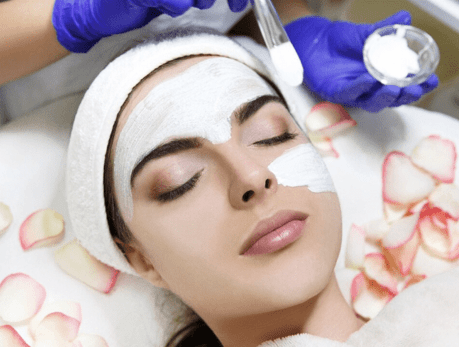Ptosis surgery is a specialized procedure designed to lift a drooping upper eyelid by repairing or reinforcing the muscles that control eyelid elevation. While the goal is often the same—restoring clear vision and a balanced appearance—the techniques used can vary significantly depending on the severity of the ptosis, muscle strength, and whether the ptosis is congenital or acquired.
In this article, we’ll explain how ptosis surgery works, the most common surgical techniques, who they’re for, and what to expect from each approach.
What Is Ptosis?
Ptosis, or blepharoptosis, refers to the drooping of the upper eyelid caused by dysfunction in the muscles or nerves responsible for eyelid elevation. It can be:
- Congenital (present at birth)
- Acquired (develops later in life from aging, trauma, or neurological issues)
When ptosis is severe, it can obstruct the visual field, cause eye strain, and result in a tired or asymmetrical appearance.
The Goal of Ptosis Surgery
Ptosis surgery is designed to:
- Elevate the upper eyelid to a more natural and symmetrical position
- Improve vision in cases where drooping blocks the line of sight
- Enhance aesthetic appearance for a more alert, youthful look
Key Factors in Choosing a Surgical Technique
Before surgery, your oculoplastic surgeon will evaluate:
- Levator function – how well the eyelid-lifting muscle works
- Severity of the droop
- Underlying cause (e.g., age-related, neurological, trauma)
- Age and health status of the patient
- Presence of other conditions like dry eye or eyelid laxity
Common Ptosis Surgery Techniques
Here are the primary surgical methods used to correct ptosis, each tailored to different patient needs:
1. Levator Advancement or Resection
🔍 Best for: Acquired ptosis with good to fair levator function
How it works:
- The levator aponeurosis (the tendon-like extension of the eyelid muscle) is either tightened or shortened.
- The surgeon makes an incision in the natural upper eyelid crease, exposing the levator.
- The levator is then advanced (reattached) or resected (trimmed) to elevate the eyelid.
- Sutures are used to close the incision.
Advantages:
- Highly effective for moderate ptosis
- Natural-looking eyelid crease
- Performed under local anesthesia with light sedation in adults
Recovery: Mild swelling and bruising for 1–2 weeks. Vision improvement is often immediate.
2. Frontalis Sling Procedure
🔍 Best for: Severe or congenital ptosis with poor levator function
How it works:
- A sling material (silicone rod, fascia lata from your thigh, or synthetic material) is inserted beneath the skin.
- The sling connects the eyelid to the frontalis muscle in the forehead.
- When the patient raises their eyebrows, the forehead muscle lifts the eyelid.
Advantages:
- Ideal for patients with little or no functional levator muscle
- Especially common in young children with congenital ptosis
- Can be performed bilaterally if both eyes are affected
Recovery: May require follow-ups to adjust sling tension. Some patients need training to learn how to use their forehead to lift the eyelid.
3. Müller’s Muscle-Conjunctival Resection (MMCR)
🔍 Best for: Mild ptosis with good eyelid muscle tone and response to phenylephrine test
How it works:
- This internal approach involves removing a portion of Müller’s muscle and conjunctiva from the inside of the upper eyelid.
- This tightens the lid and elevates it slightly—no external incision is needed.
Advantages:
- Quick recovery
- No visible scarring
- Minimal invasiveness
Recovery: Faster healing and less downtime compared to external approaches.
4. Combined Procedures
🔍 Best for: Patients with ptosis plus excess upper eyelid skin (dermatochalasis)
In many cases, ptosis surgery is combined with:
- Upper blepharoplasty – Removal of redundant skin or fat from the eyelid
- Canthoplasty or canthopexy – Procedures to tighten or reshape the eyelid corners
Advantages:
- Addresses both functional and cosmetic concerns
- Enhances symmetry and eye shape
Recovery: Similar to standard ptosis surgery but may involve a slightly longer downtime depending on the extent of the procedure.
What Happens During the Procedure?
- Anesthesia: Local anesthesia with sedation is common for adults; general anesthesia for children.
- Duration: Most procedures take 30–90 minutes.
- Same-day discharge: Ptosis surgery is usually an outpatient procedure.
Post-Operative Care and Recovery
- Swelling and bruising typically peak in the first 48 hours and subside within 1–2 weeks.
- Use cold compresses, prescribed eye drops or ointments, and keep the head elevated.
- Most patients return to normal activities in 7–10 days, though complete healing can take a few weeks.
- Sutures (if non-absorbable) are usually removed within 5–7 days.
- Final eyelid position may take several weeks to stabilize.
Risks and Considerations
Though generally safe, ptosis surgery carries potential risks:
- Overcorrection or undercorrection
- Asymmetry
- Dry eyes or incomplete eyelid closure
- Scarring (minimal when using the eyelid crease)
- Need for revision surgery in some cases
Choosing a board-certified oculoplastic surgeon helps reduce these risks and improve your outcome.
Who Performs Ptosis Surgery?
Ptosis correction should be done by an oculoplastic surgeon—an ophthalmologist with specialized training in plastic and reconstructive surgery of the eyelids and face. Their dual expertise ensures safe, vision-preserving results with attention to cosmetic detail.
Is Ptosis Surgery Permanent?
In most cases, ptosis surgery produces long-lasting results, especially when underlying causes are addressed. However, additional surgery may be needed if:
- The eyelid continues to droop with age
- The initial correction was insufficient or overdone
- Sling material loosens over time (in frontalis procedures)
Conclusion
Ptosis surgery is a highly customizable and effective procedure that restores both function and aesthetics to drooping eyelids. Whether you need a simple levator advancement, a sling for congenital ptosis, or a combined cosmetic procedure, your oculoplastic surgeon will guide you through the best approach for your needs.
Understanding how ptosis surgery works—and the options available—can help you make an informed decision and achieve the best possible results for your vision and appearance.




